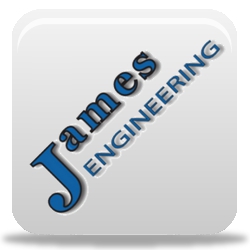Automatic Polishing Machine Advantages
The Evolution of Automatic Metal Polishing
Automatic metal polishing and traditional polishing have always been a crucial part in the manufacturing process. Polishing provides essential finishes across many industries. Automatic polishing machines and automatic polishing tools have transformed the field. This article explores the differences in automatic polishing for metal, its advantages over manual polishing, and the significant impact of this technology on modern manufacturing, especially in the context of metallography and polishing for various types of metals from stainless steel to aluminum.
Basics of Metal Polishing
Metal polishing or buffing is the process of smoothing and shining metal surfaces. It is commonly achieved by rubbing or chemically treating the surface. The process of polishing can remove oxidation, and create a reflective surface, and is important for improving the appearance and functionality of the metal parts. Automotive, aerospace, the medical industry, and consumer electronics are just a few major industries that rely on polishing.
Manual vs. Automatic Metal Polishing
MANUAL POLISHING: THE TRADITIONAL APPROACH
Manual metal polishing is typically labor-intensive and heavily relies on a skillful and experienced operator. It involves handheld tools, abrasive materials, and various polishing compounds. While the manual approach can produce effective results, manual polishing has several disadvantages:
Inconsistency: Even with a skillful operator it is impossible to produce the same result every time so human error needs to be factored in. Varying results in finish quality can affect the uniformity of the final product.
Time-Consuming: Manual polishing is a slow process that can minimize production efficiency.
Safety Concerns: Manual polishing can create dangerous dust and hazardous materials posing health risks to workers.
AUTOMATIC POLISHING: THE MODERN SOLUTION
Automatic metal polishing machines address and solve the issues associated with manual polishing. These machines can use robotics, CNC (Computer Numerical Control) systems, or other technologies with specialized polishing tool heads. Key advantages include:
Consistency and Precision: Automatic machines can consistently produce high-quality finishes without inconsistencies.
Speed and Efficiency: Automatic polishing machines run much faster than manual methods and avoid the inefficiency of human fatigue.
Cost-Effective: By avoiding the risk of scrapped parts due to human error, automatic machines can cut financial costs in more ways than one. With a one-time purchase too there is no consistent cost with the machines.
Safety and Environmental Benefits: Enclosed polishing systems trap harmful dust and material creating a safer work environment.
Airplane Engine Nosecone Polished by a James Machine
Case Study: Enhancing Automatic Polishing with the Max Systems Machine
James Engineering has developed an automatic polishing machine, a one-stop shop for surface finishing. The fully optimized MAX Systems Machine goes above and beyond a typical automatic deburring machine and solves issues that are still associated with automatic polishing.
Key features of the MAX Systems Machine:
Full Surface Finishing: Aside from polishing, James Engineering’s machines can be equipped for any other simultaneous surface finishing including, deburring, chamfering, radiusing, etc.
Unmatched Consistency: Typical automatic machines lack machine “compliance”. This means that tool wear and inconsistently shaped parts will create differences in polishes part to part. James Engineering’s patented technology mechanically makes up for this and can comply with any differences from part to part, producing a perfect finish every time.
User-Friendly: Our machines are designed to be run by any operator. With the simplest control panel, there is no worry about finding an expert operator. These seamless controls also contribute to the efficiency of the MAX Systems Machines.
Sustainable Wash System: The MAX Systems enclosed system not only isolates hazardous dust and materials but also can be equipped with a recycling wash system further adding to the sustainability of these machines.
Machine Memory: All James Engineering machines are equipped with “recipes” (saved part cycles). They can easily be called up allowing for change overtimes to only amount to a few seconds, even when swapping to a complex part.
The Future of Metal Polishing
Automatic metal polishing represents a significant advancement from traditional manual methods, offering numerous benefits in terms of consistency, efficiency, cost-effectiveness, and safety. As technology continues to evolve, the gap between manual and automatic polishing will only widen, solidifying the latter as the preferred choice for high-quality metal finishing.
For manufacturers seeking to enhance their production capabilities, investing in automatic polishing solutions like a MAX Sytems Machine can provide a competitive edge and drive long-term success.



